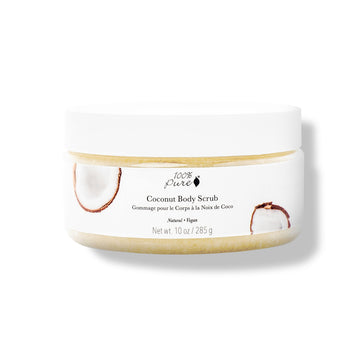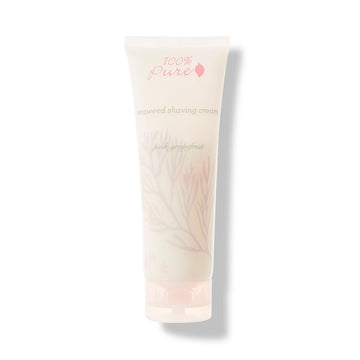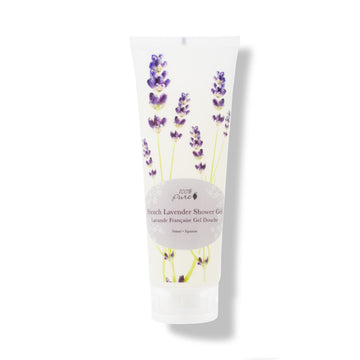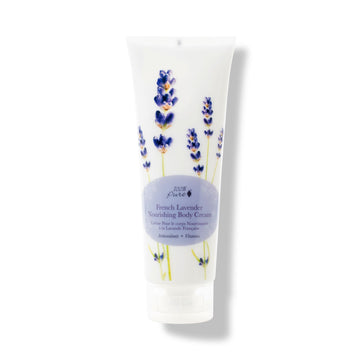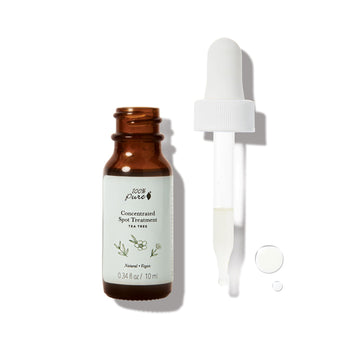Smooth razor burn and ingrown hair bumps for summer
Written by: 100% PURE ®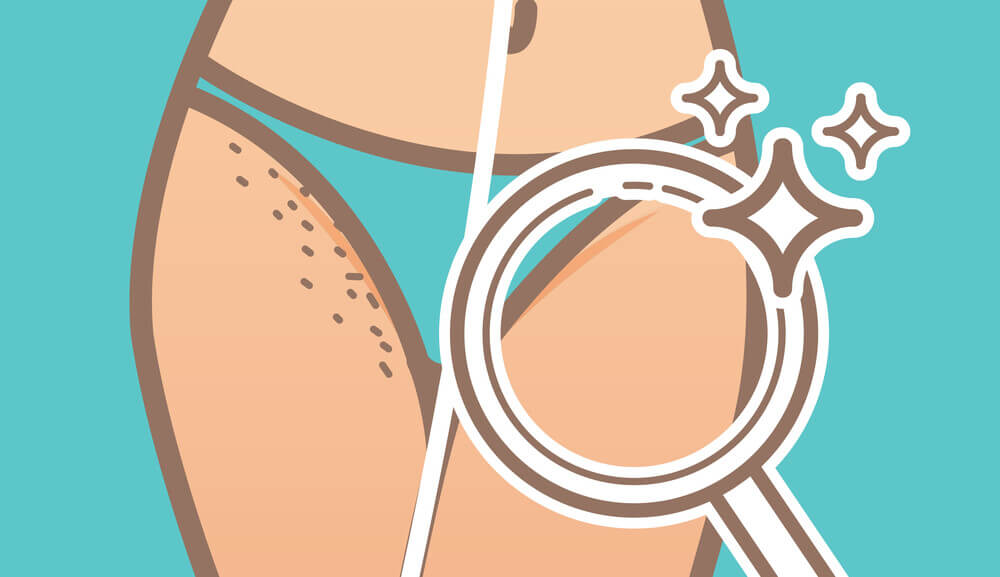
Summer means swimsuit season – and for a lot of us, that means shaving for the first time in a while.
We all want a smooth bikini line, but is it worth it when you get ingrown hairs? This is a compromise no one should have to make, and luckily no one has to! We’re talking about how to get rid of ingrown hairs at home with a few simple tips.
In order to understand how to get rid of ingrown hair, it helps to understand how it happens in the first place.
Ingrown hairs occur when the tip of a hair grows sideways into the hair follicle. The tips of hair can be surprisingly sharp, especially when closely or improperly shaven, and end up piercing the skin.
Often, this occurrence results in an ingrown hair bump, which resembles a small pinpoint that may appear slightly dark in color. In some cases, it may even form a pus-filled papule that could be mistaken for a pimple. In more intense cases, some individuals may notice a peppering of red or pink bumps all along the area that’s been shaved.
Where Ingrown Hairs Happen
Generally speaking, ingrown hairs can happen anywhere on the body that hair grows. But for most individuals, it mainly happens on the part of our body that’s frequently shaved: the legs, the armpits, the pubic region and for men, the beard area.
Why Ingrown Hairs Happen
Ingrown hairs may occur for a few reasons. And while some of these factors are beyond one’s control, others are things we can work to prevent.
Firstly, texture is a major player. Ingrown hairs are more common for those with curly hair. Part of the reason ingrown hairs occur in the first place is because the hair curls back in on itself or sideways into the hair follicle.
The way in which you’re removing your hair is a factor as well. While shaving can be a snap when it comes to hair removal, you’re far more likely to end up with an ingrown hair than if you were to wax.
While waxing uproots hairs from the follicle, shaving the hair too close to the skin is likely to leave the hairs with a sharp, angular tip that’s more likely to pierce the skin and result in an ingrown hair.
Unfortunately, waxing or tweezing won’t eliminate the possibility of ingrown hairs either. Waxing and tweezing can still leave a fragment of hair below the surface.
Aside from hair removal, ingrown hairs may occur when the individual doesn’t exfoliate enough, leading to excess dead skin cells and sebum on the skin’s surface. This onset of dead skin cells can potentially block the hair follicle’s opening, forcing the hair to grow at an angle.
When striving for that close shave, both ingrown hair bumps and razor burn can potentially occur. And while the two terms are often used interchangeably, there’s actually a difference between the two conditions.
Razor burn can occur from using old blades, repeatedly going over the same area, shaving against the direction of growth, and shaving too fast.
Razor burn will typically come with a burning, itching sensation, and while small red bumps may occur, they tend to be smaller and less pronounced than ingrown hairs, which look more like acne.
Knowing how to get rid of ingrown hair may also help prevent razor burn, too.
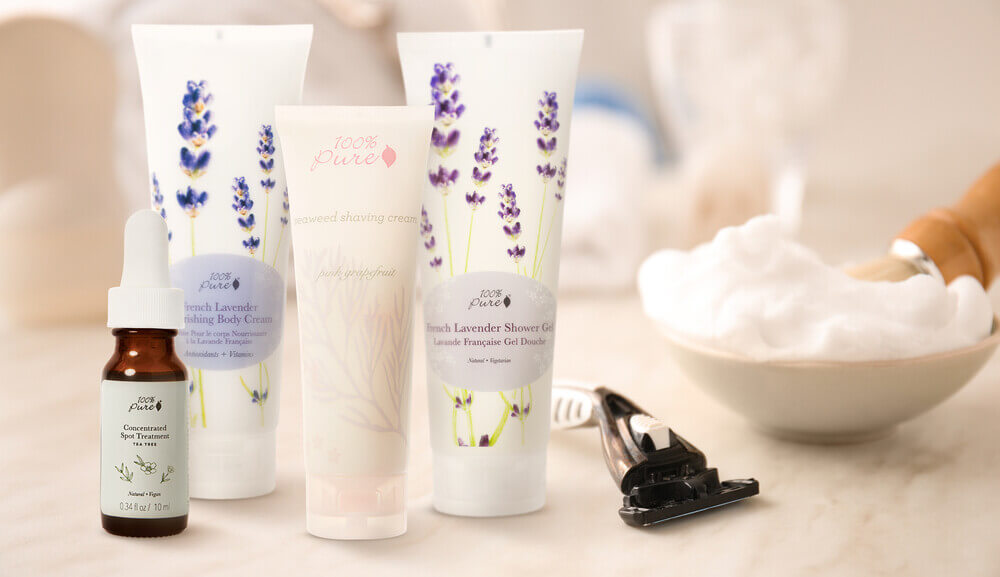
Now that we have a better understanding of what causes it, let’s talk about how to get rid of ingrown hair.
First, let’s address the question: “can I get rid of ingrown hairs by plucking or popping them?”
While this may seem like a good idea (especially since ingrown hairs can look like a pimple), it’s generally not advised. This method isn’t a guarantee that the hair will come out, and you could increase the risk of infecting the area. However, there are ways to help the hair come out on its own.
First, soften the skin by applying gentle heat with a warm compress. This will help the hair follicle relax, making it easier for the hair to come out.
Next, gently exfoliate the ingrown hair bump. You can do this with either an exfoliating pad, a soft-bristled toothbrush, or a scrub. Our Coconut Body Scrub makes a great option for especially sensitive skin. Using an exfoliant containing salicylic acid is also a great option for treating ingrown hair bumps.
While this isn’t an instant fix. It’s a much safer and gentler option for removing ingrown hair.
Ultimately, prevention is the best cure for ingrown hair – so here’s how to shave this summer while preventing ingrown hair bumps!
1. Pre-Shave Hydration
Before shaving, preparation is key. This means making sure the skin is hydrated beforehand.
While there are plenty of hydrating shave gels and creams, it’s important that your skin is moisturized well before the shaving process.
Using body oil is a great option, especially one that’s rich in antioxidants, like rosehip oil. Coconut oil or sunflower seed oil also make great options, since they help condition and strengthen the skin barrier.
2. Use the Right Razor
When it comes to preventing ingrown hair, the right razor is essential.
If you’ve been using disposable razors, consider investing in a razor with replaceable multi-blade heads. This is going to save you money in the long run, and it means less plastic waste. And when those blades start to get dull, change them out!
3. Lubricate Your Skin
Now that your skin is hydrated and your razors are sharp, it’s time to apply your shaving cream or gel.
While it may seem like overkill to use a shaving product on top of oil, this extra protection is going to make a huge difference, and it’s going to help the blades glide more smoothly on the skin.
Make sure that you choose something non-irritating and highly emollient. Our Pink Grapefruit Seaweed Shaving Cream creates the slickest shave possible with seaweed collagen, while nourishing skin with green tea.
All out of shaving cream? A highly emollient shower gel like our Lavender Shower Gel is a great stand-in.
4. Go With the Grain
Now it’s time to shave! When doing so, it’s important to go with the grain, not against. Going against the grain may seem more effective, but you can actually irritate the skin this way. It’s one of the fastest ways to cause ingrown hairs!
5. After-Shave Care
After shaving, it’s time to apply some post-shave care. Give your freshly-shaved skin a body oil or an anti-inflammatory moisturizer, like our Lavender Body Cream. The idea here is to make sure that your skin is hydrated during every step of the shaving process!
To prevent any further irritation, avoid wearing any tight-fitting materials like spandex or nylon, and instead opt for something more loose-fitting that creates less friction. This is especially important on hot days when you might sweat.
To reduce painful swelling and redness – and to banish bacteria – between shaves, apply a natural acne spot treatment to ingrown hairs. Anti-inflammatory herbs like witch hazel and tea tree are especially powerful for calming ingrown hairs.
Check out more tips for smooth, clear skin this summer:
- Tags: Bath Body Hair
We carefully hand-select products based on strict purity standards, and only recommend products we feel meet this criteria. 100% PURE™ may earn a small commission for products purchased through affiliate links.
The information in this article is for educational use, and not intended to substitute professional medical advice, diagnosis, or treatment and should not be used as such.












